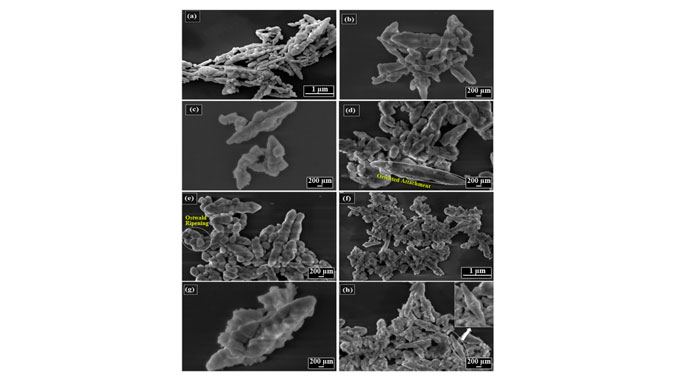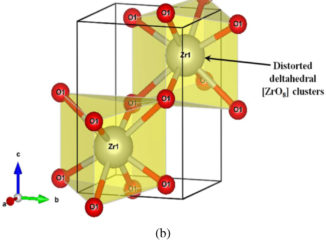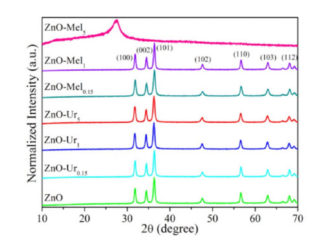
Writers: Gurgel, GM; Lovisa, LX ; Pereira, LM; Motta, FV; Li, MS; Longo, E; Paskocimas, CA; Bomio, MRD
Keywords: PbMoO4; Earth rare; Sonochemistry; Photoluminescence; photocatalytic activity; luminescent properties; oriented attachment; growth-mechanism; lead molybdate; microcrystals; degradation; crystals; nanostructures; nanocrystals
Abstract: The PbMoO4 co-doped with Tm3+, Tb3+ Eu3+ with scheelita structure was synthesized by the sono-chemical method. The photoluminescent properties, structural and color coordinates emitted by phosphors were investigated. The structural analysis of the crystal and the changes in lattice parameters confirm that the rare earth ions (RE3+) were successfully introduced into the host of the PbMoO4. The relationship between energy gap (Egap) and the concentration of RE3+ ions was also discussed, the Egap is significantly influenced by the degree of structural order-disorder present in the crystal lattice. The PbMoO4:RE3+ shows light emission in green. Under UV excitation, Photoluminescence (PL) shows a broad band centered at 520 nm and smaller bands belonging to transitions of RE3+: (1)G(4) -> F-3(4) and D-1(2) -> H-3(4) at 480 and 533 nm (Tm3+), D-5(4) -> F-7(j) = 6, 5) at 493 and 550 rim (Tb3+) D-5(0) -> 7Fj =1, 2, 4) 593, 615 and 702 nm (Eu3+).
SEE PDF: Photoluminescence properties of (Eu, Tb, Tm) co-doped PbMoO4 obtained by sonochemical synthesis
DOI: 10.1016/j.jallcom.2016.12.409




